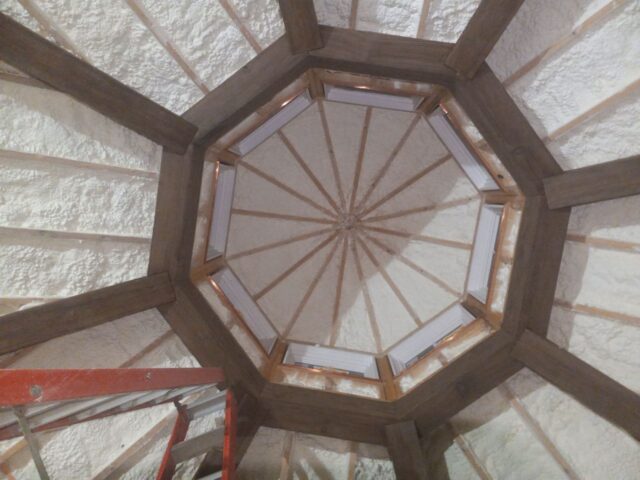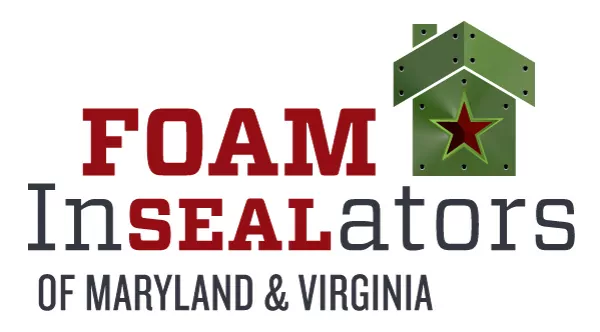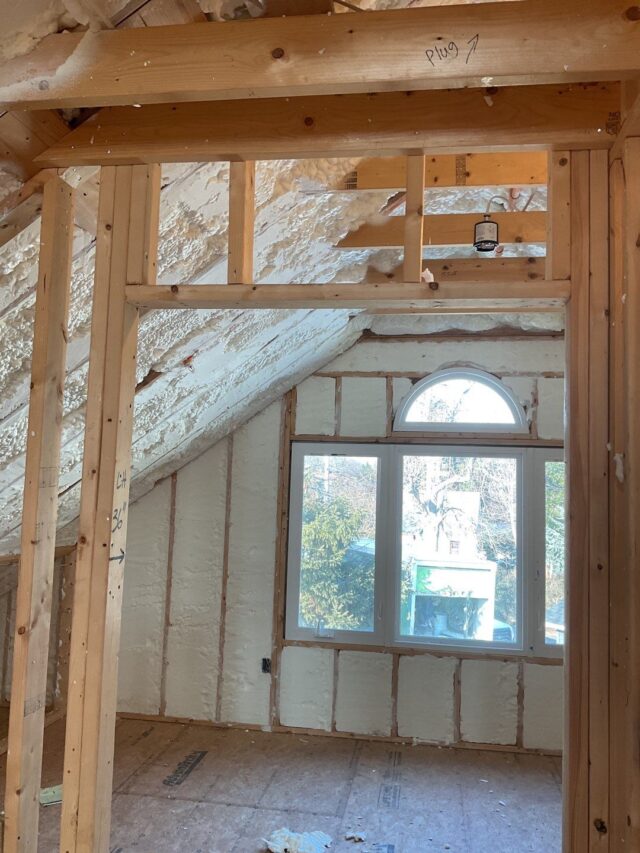Update June 2024
 No one enjoys rising energy bills any time of the year, yet scorching summers and chilly winters in the Mid-Atlantic often make energy bills a burden. But there’s hope! Your attic can provide year-round comfort and savings with the addition of spray foam insulation. Traditional insulation, such as fiberglass batts, can sometimes struggle to combat the unique climate challenges we face in Maryland and Virginia, leading to drafts, ice dams, and inefficient temperature control. But attic spray foam expands to air seal and insulate, creating a custom-fit, airtight seal that shields your home from extreme weather, optimizes energy use, and enhances comfort.
No one enjoys rising energy bills any time of the year, yet scorching summers and chilly winters in the Mid-Atlantic often make energy bills a burden. But there’s hope! Your attic can provide year-round comfort and savings with the addition of spray foam insulation. Traditional insulation, such as fiberglass batts, can sometimes struggle to combat the unique climate challenges we face in Maryland and Virginia, leading to drafts, ice dams, and inefficient temperature control. But attic spray foam expands to air seal and insulate, creating a custom-fit, airtight seal that shields your home from extreme weather, optimizes energy use, and enhances comfort.
Spray Foam: Engineered for Mid-Atlantic Weather
As insulation experts, we know that spray foam’s high R-value, air sealing properties, and moisture resistance are crucial for our local climate. Our area experiences significant humidity in the summer, which can lead to condensation problems and mold growth, while in winter, the challenge shifts to retaining heat within your home. Spray foam insulation, with its superior air-sealing capabilities, creates a barrier that prevents both moisture infiltration and heat escape, making it ideally engineered for our Mid-Atlantic weather.
Energy Efficiency: More Than Just Numbers
Attic spray foam insulation tackles Mid-Atlantic issues like condensation, ice dams, and air leakage through:
- Air Sealing: Creates an airtight barrier, reducing condensation and mold risk.
- Thermal Barrier: High R-value reduces heat transfer, maintaining indoor temperatures.
- Ice Dam Prevention: Keeps your roof temperature consistent, by not allowing warm air to escape through your attic to melt the snow on your roof that then refreezes at the eaves, causing water damage and ice dams.
- Reducing Air Leakage: Fills gaps, reducing drafts and improving energy efficiency.
Spray foam insulating material not only insulates and air seals but also supports the overall energy efficiency of your home. This results in consistent indoor temperatures, reduced HVAC strain, and lower energy consumption for a comfortable, efficient home.
A local homeless shelter is enjoying the benefits of upgraded attic insulation:
The Talbot Interfaith Shelter (TIS) in Easton, MD was in dire need of energy upgrades, including air sealing and insulation. But creating a more energy efficient facility was about more than just saving on energy bills, it was about “having increased comfort and greater financial resources” to direct back into helping their local homeless population. Through a local grant they were able to do that by vastly improving their energy efficiency with the addition of attic insulation and other cost effective energy measures, saving them $3,050 annually on their energy bills, with $607 coming from air sealing and insulation alone. Check out the whole story on the Maryland Energy Administration website.
Beyond Energy Savings: A Holistic Upgrade
Beyond energy savings, spray foam insulation offers several additional benefits relevant to the Mid-Atlantic region. It doesn’t absorb water, preventing mold in our humid climate. In fact, it’s more moisture resistant than other insulating materials like fiberglass and cellulose. Improved indoor air quality is another benefit, crucial for allergy sufferers. Spray foam reduces the infiltration of outdoor allergens entering your home, providing a healthier living environment. One of the best benefits is that spray foam protects against pests that thrive in humid conditions, thanks to its insulating and air sealing abilities. Unsure of which type of spray foam is right for your region? Don’t hesitate to consult with a local contractor for expert advice and tips.
Choosing the Right Spray Foam for Your MD or VA Home
When it comes to choosing the right type of spray foam for your home in Maryland or Virginia, understanding the differences between open-cell and closed-cell spray foam is essential. Closed-cell spray foam is often recommended for its superior moisture resistance and higher R-value and density, making it ideal for our varied weather conditions in the Mid-Atlantic. To ensure proper installation and maximum benefits, finding a reputable local contractor, like Foam InSEALators, is crucial. Resources such as local energy-efficiency programs or contractor directories can help you locate experienced professionals in the region. Additionally, installing spray foam insulation should never be a DIY project. It should always be done by a certified expert to ensure compliance with local building codes and optimal performance.
Need help with the cost of energy upgrades? Maryland residents can check out the Maryland Department of Housing and Community Development website for local energy efficiency solutions, while Virginia homeowners can visit the Northern Virginia Regional Commission website.
Transform Your Home for the Better
Upgrading your attic insulation with spray foam is not just an upgrade, it’s an essential home improvement solution for comfortable, energy efficient living in the unique climate of Maryland and Northern Virginia. By investing in spray foam insulation, you can significantly improve your indoor air quality, reduce your heating and cooling costs, and enhance the overall comfort of your home. We encourage you to get a home energy audit from a local expert, such as Foam InSEAlators, to find out exactly where your home is losing energy and explore how attic spray foam can transform your home for the better. Embrace this insulation solution and enjoy the benefits of spray foam insulation year-round.
At Foam InSEALators, we’re here to help you create and enjoy a more energy efficient home. As the largest spray foam contractor in Maryland and Northern Virginia, we’re well versed in our local climate and energy codes to provide you with the best insulating solutions for your home. Contact us today to learn more about insulating the attic of your Maryland or Northern Virginia home.



